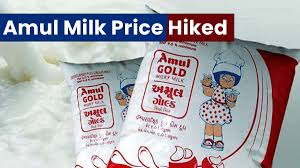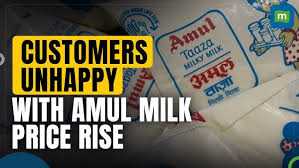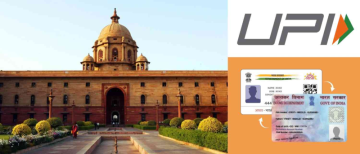In the realm of Indian households, few things hold as much significance as the morning ritual of a steaming cup of tea or coffee infused with the creamy goodness of Amul milk. However, the recent announcement of a price hike by ₹2 per liter across all variants has sparked discussions and debates across the nation. Let's delve into the reasons behind this decision and its potential impact.

Recognizing the Dynamics:
Imagine the peaceful ranchlands of Gujarat, where the dairy farmers carefully take care of their cows to produce the best possible milk. Eventually, this milk is incorporated into the recognizable Amul pouches that line kitchen cabinets throughout the nation. However, there is a complicated network of variables that affect pricing decisions hidden beneath this seemingly straightforward process. The main force behind the Amul brand, the Gujarat Cooperative Milk Marketing Federation (GCMMF), has stated that the price increase is mostly due to an increase in the overall cost of manufacturing and operation. Numerous causes, including inflationary pressures and growing gasoline costs, have influenced this choice.
The Ripple Effect:
Amul's philosophy is centered on its dedication to helping dairy farmers. The raise, according to GCMMF MD Jayen Mehta, is necessary to make up for the higher cost of production for farmers. Amul maintains fair milk prices by giving milk producers around 80 paise for every rupee that consumers pay them. This guarantees that farmers get their fair share. Although the increase of ₹2 per liter appears small at first, it has important consequences. The updated costs for variations such as 500 ml Amul Gold milk, 500 ml Amul Shakti milk, and 500 ml Amul buffalo milk are now ₹36, ₹33, and ₹30, respectively. Even while this corresponds to a 3-4% increase in MRP, it is still less than the average rate of food inflation.

Amul's determination to balance the interests of farmers and consumers alike is demonstrated by its decision to impose this price increase. Amul's pricing approach has shown caution and forethought by keeping prices steady since February 2023 despite rising operating expenses. The ripple effect of the minor increase in milk prices is felt by consumers beyond their daily cup of tea. The effects of this surge are felt by bakeries, confectioneries, restaurants, and households, among other sectors of the economy. Amul tells customers, though, that this change is required to guarantee the dairy industry's viability.
Final Thoughts:
With this price increase, one can't help but wonder what the future holds for dairy consumption in India. Even though Amul's products are a little more expensive, will consumers still choose them? How will rivals react to this advancement? We'll have to wait and see how this chapter in the history of India's dairy landscape plays out. As we bid farewell to the days of reasonably priced milk, it's critical to understand the complex interplay between supply, demand, and economic realities.

The move by Amul to raise milk prices is a reminder of the careful balance needed to maintain a sector that provides food for millions of people. The underlying message is still quite obvious, even after the immediate shock has subsided: in the world of dairy, every rupee spent is a monument to the tenacity of India's dairy farmers and the continuing history of companies like Amul.
Inputs by Agencies
Image Source: Multiple Agencies
Ⓒ Copyright 2024. All Rights Reserved Powered by Vygr Media.

























